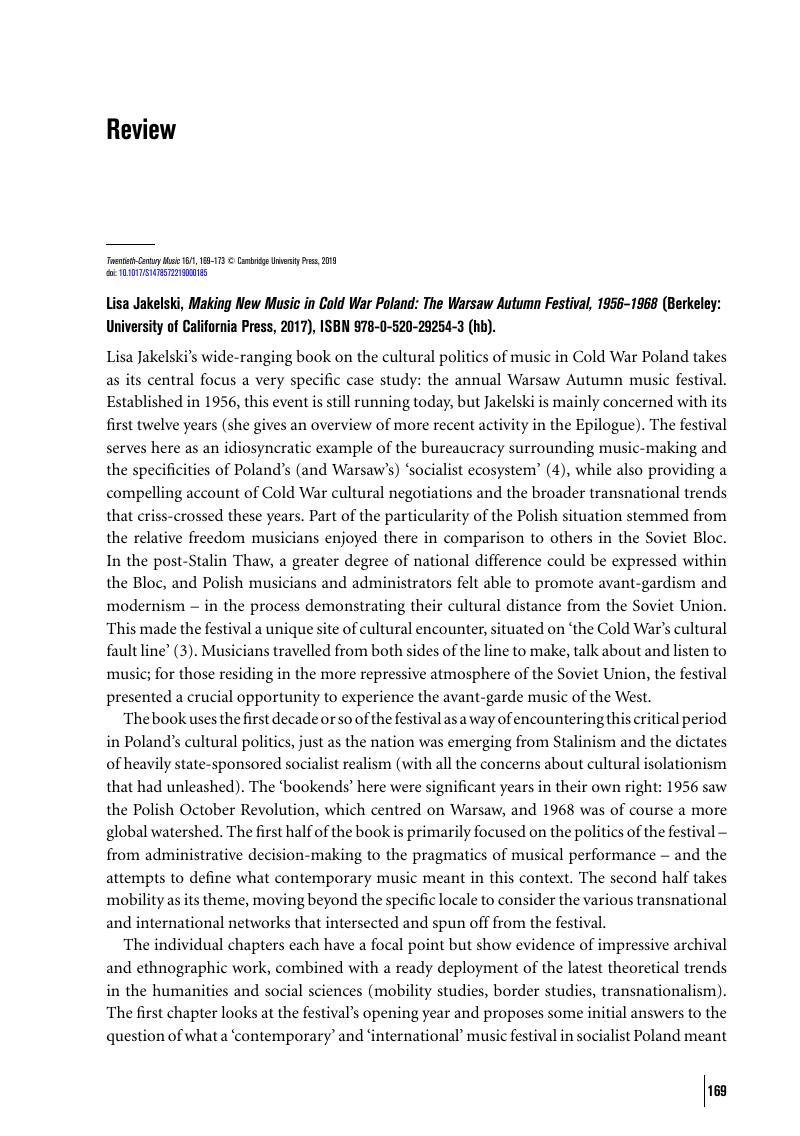No CrossRef data available.
Published online by Cambridge University Press: 15 March 2019

1 Jakelski notes that the object of her analysis is ‘the performance of social interactions in particular institutional frameworks, and how these interactions have shaped the practices, values, and concepts associated with “new” (or “contemporary”) music’ (1).
2 Péteri, György, ‘Nylon Curtain: Transnational and Transsystemic Tendencies in the Cultural Life of State-Socialist Russia and East-Central Europe’, Slavonica 10/2 (2004), 113–23CrossRefGoogle Scholar; and David-Fox, Michael, ‘The Iron Curtain as Semi-Permeable Membrane: The Origins and Demise of the Stalinist Superiority Complex’, in Cold War Crossings: International Travel and Exchange Across the Soviet Bloc, 1940s-1960s, ed. Babiracki, Patryk and Zimmer, Kenyon (College Station: Texas A&M University Press, 2014), 14–39Google Scholar.
3 ‘Festival studies’ has recently gained traction elsewhere, with much of the impetus coming from film studies. Thus far, it has mainly intersected with tourism and event studies. But it is increasingly being recognized as an important subdiscipline in its own right, with the Journal of Festive Studies (published online under the auspices of H-Net Commons) having been inaugurated in 2017.